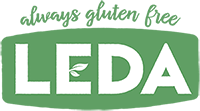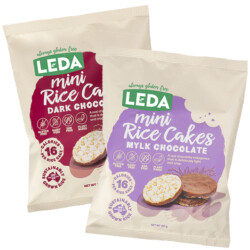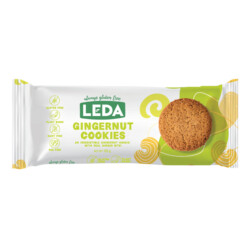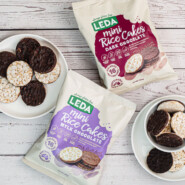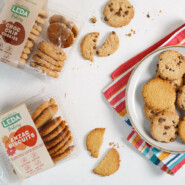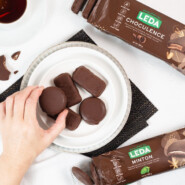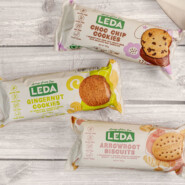with Coconut Cream and Aquafaba Meringues
Ingredients
Crust
1 x 205g packet Leda Arrowroot Biscuits
½ cup coconut oil, melted
Filling
1 cup cashews, soaked in water overnight
3 x 270mL cans coconut milk, refrigerated overnight
3 tbsp rice malt syrup
Juice of 2 lemons
2 tsp vanilla extract
1/3 cup coconut oil, melted
Strawberries and Aquafaba meringues to garnish (see below for recipe)
Strawberry Compote
1 cup strawberries, rinsed, hulled, and quartered
1 tbsp rice malt syrup
1 tbsp lemon juice
Coconut Cream
1 can coconut cream, refrigerated overnight, solids only
1/4 cup powdered Monkfruit sweetener
1/2 tsp vanilla extract
Method
Lightly grease a 20cm spring-form pan.
Blend or process Arrowroot biscuits until mixture resembles fine breadcrumbs. Add coconut oil; process until just combined. Press mixture into an even layer in the prepared pan.
Drain cashews and place in the food processor.
Remove coconut milk from the refrigerator, scoop out just the cream and add to food processor.
Add rice malt syrup, lemon juice and vanilla extract and process until cashews are completely broken down and the mixture is smooth. With the processor running, slowly add the coconut oil and continue to process until thoroughly combined.
To make the compote, heat a saucepan over medium-low heat. Add strawberries, syrup, and lemon juice. Simmer uncovered, stirring occasionally until strawberries have broken down, about 10 minutes. Allow to cool.
Pour half of the cashew mixture over crust. Use a teaspoon to drop dollops of compote over the cashew mixture.
Carefully spoon remaining cashew mixture over sauce.
Drop spoonful’s of remaining strawberry compote on top. With a knife, drag through strawberry patches to create swirls.
Place in the freezer to set completely.
To make coconut cream, whip coconut solids with electric mixer. Add powdered Monkfruit sweetener and vanilla extract; whisk until the mixture resembles whipped cream.
When ready to serve, remove cake from freezer and top with coconut cream, strawberries and meringue kisses..
Serves 8
You can find Leda Arrowroot Biscuits in select Coles supermarkets, independent grocers and larger health food stores.
Aquafaba Meringue Kisses
Ingredients
liquid from 1 can of chickpeas (aquafaba)
1/2 tsp cream of tartar
1/2 tsp vanilla extract
3/4 cup powdered Monkfruit sweetener
Method
Line 2 trays with baking paper. Preheat the oven to 95 degrees C.
On medium speed, whip the aquafaba, cream of tartar, and vanilla extract to form soft peaks. With the mixer running, slowly add the sugar. Increase the speed to medium high and whip to full peak. Pipe or spoon the meringues onto the baking sheets in the desired shape. Bake for 1 hour, then turn the oven off and allow to cool in the oven for an additional hour, or until completely dry. The meringues will be very light and completely firm when dry.
